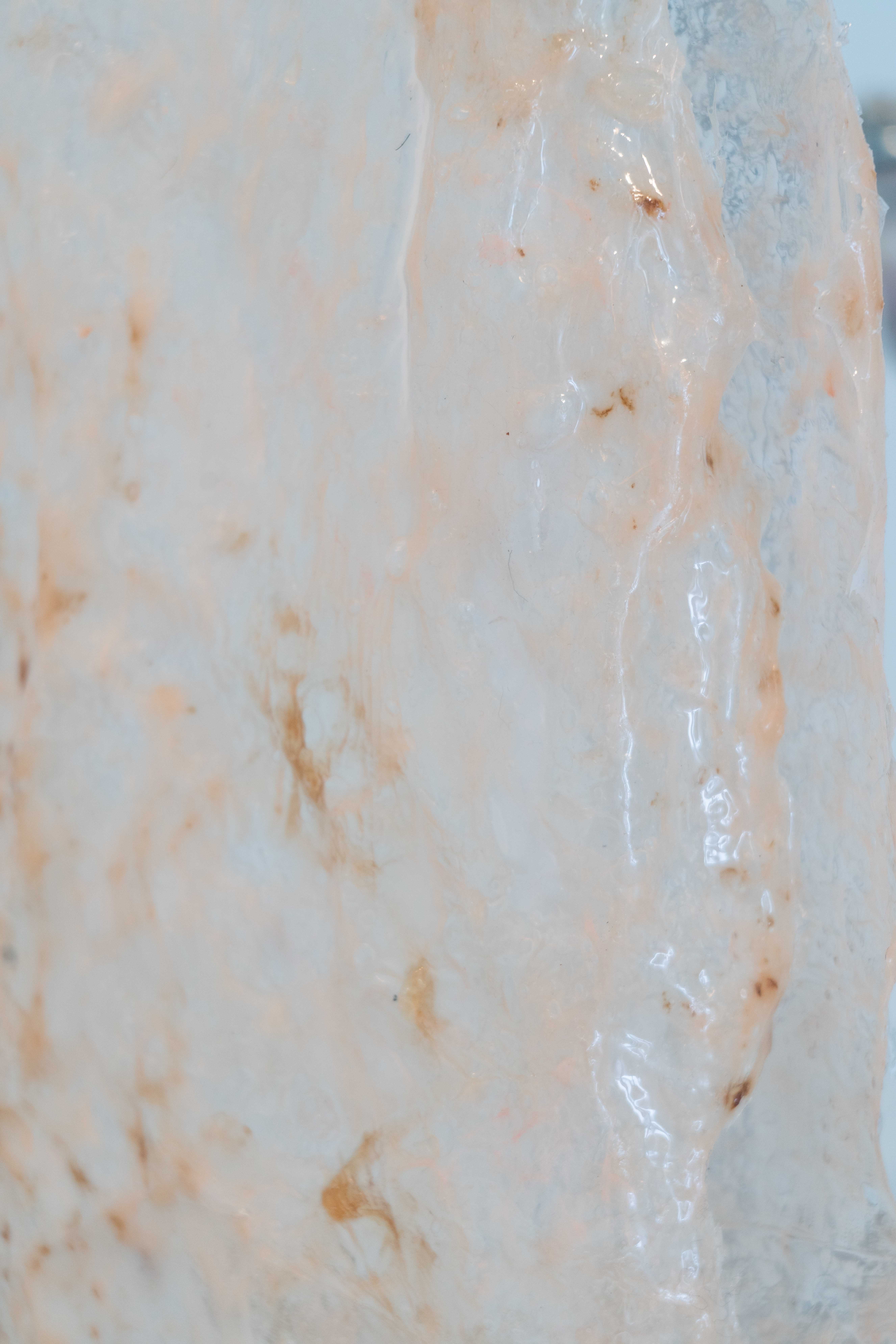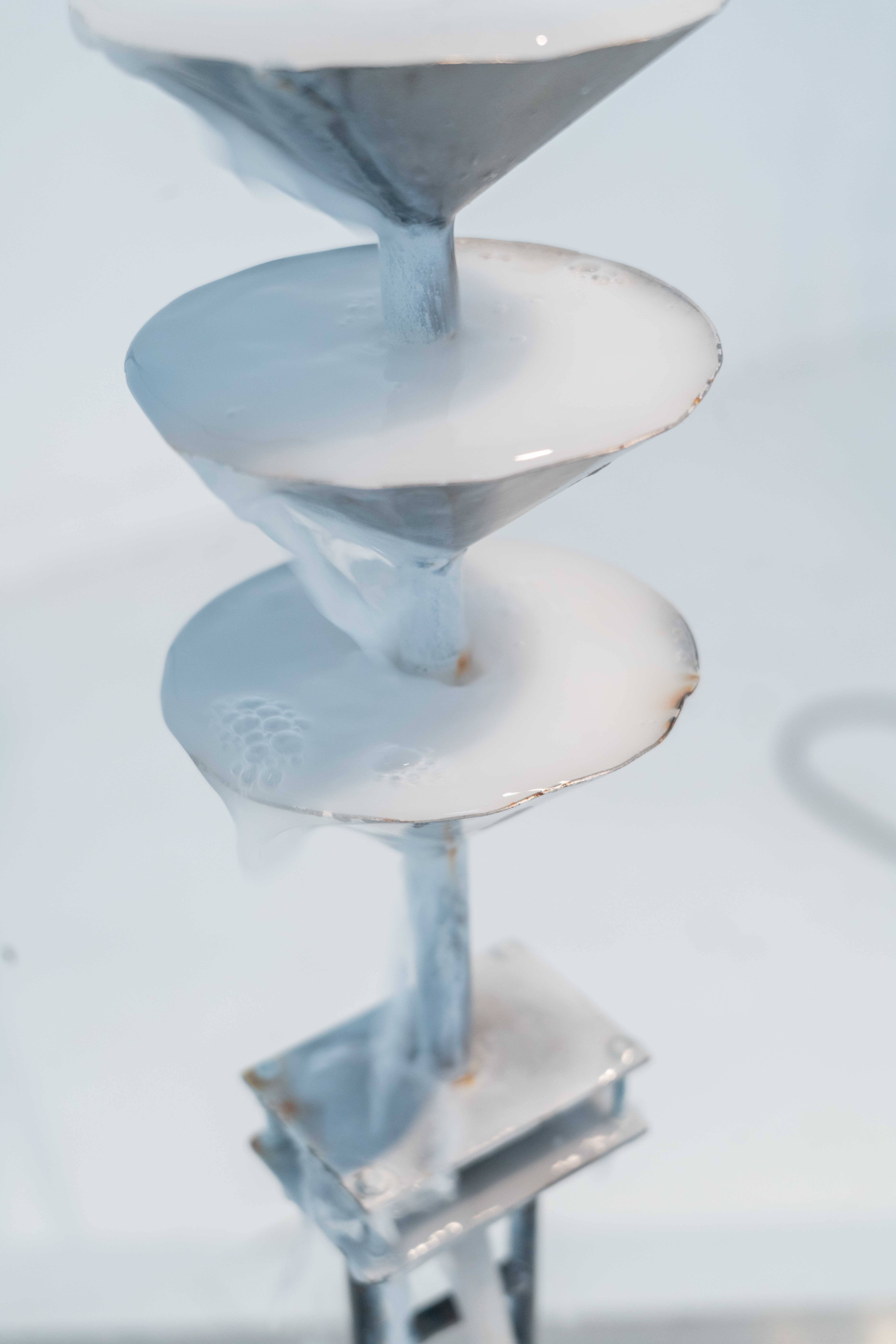
Pour Your Body Out (2023)
Material: powder milk, water, steel, silicone, pumps, etc.
Maya Erin Masuda is an artist who explores the intersection of technology and biopolitics through the lenses of queer theory and more-than-human studies. Through her investigation into the genetic mutations and skin inflammation brought by radiation, she reconstructs the reality of geo-trauma as an alternative reality. By analyzing the collective ecological trauma, her work examines the lasting impact of these catastrophic events on both ecosystems and bodies.
Following the 1986 Chernobyl disaster, 95,500 cows and 23,000 pigs were slaughtered due to human fear of consuming contaminated meat [1]. Similarly, in Fukushima, all surviving livestock animals within the evacuation zone were ordered to be killed by the governmental order. Fear of exposure to invisible radiation shaped not only policies regarding animal life but also human reproductive choices. For example, multiple testimonies show that the fear of internal and external exposure to invisible nuclear energy simultaneously led to divisions over reproduction and its bodily rights even among humans, including the emergence of institutionalised abortions [2].
In the wake of these planetary traumas, what does contemporary nationalism in Japan indicate? Masuda interrogates a discourse that simultaneously oppresses queer communities, enforces population control through eugenics, and promotes nuclear energy—while disregarding its profound risks to human and non-human life. Her work envisions a space where human, animal, planetary, and machine bodies converge, revealing structures of domination through nuclear power and its reproductive consequences. By exploring the circulation of bodily fluids—neither wholly human nor animal nor planetary—Masuda raises urgent questions about posthumanism, intimacy, pain, queerness in the future.
[1] International Atomic Energy Agency, Environmental Consequences of the Chernobyl Accident and their Remediation: Twenty Years of Experience , ( INTERNATIONAL ATOMIC ENERGY AGENCY VIENNA, 2006)
[2] Sebastian Pflugbeil, Henrik Paulitz, Angelika Claussen, Inge Schmitz-Feuerhake, Health Effects of Chernobyl 25 years after the reactor catastrophe, (German Affiliate of International Physicians for the Prevention of Nuclear War (IPPNW), 2011)





